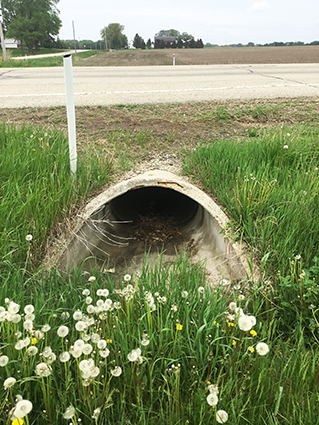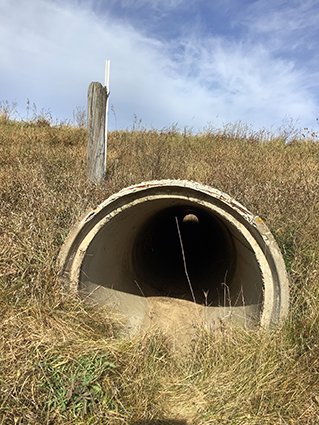What is a culvert?
Roads displace rainwater that would otherwise be absorbed by the ground. A culvert is a buried structure with the primary purpose of moving this stormwater under roadways, railroads or embankments. By allowing proper drainage under a roadway, culverts prevent damage to the road, flooding and erosion.
What is the Culvert Asset Management Program (CAMP)?
CAMP performs the condition inspection and
inventory of culverts on state highways. This aids the highway program in scheduling needed maintenance and improvement activities to achieve lower life-cycle costs. Identifying problems early prevents costly repairs later.
Culvert inspectors routinely examine and rate culverts for a variety of issues. Some examples include corrosion, misalignment of pipe sections and distortion of the shape of the culvert. Culvert inspectors also look for erosion around the pipe and evidence of water or soil seeping in/out of the culvert's joints. Additionally, inspectors look for signs of distress in the pavement, which can indicate the culvert is impacting the road.
How often are culverts inspected?
Routine culvert inspections are performed every four years.
Who inspects culverts?
WisDOT culvert inspectors are engineers, engineering students or personnel with previous experience inspecting and installing culverts. New culvert inspectors also spend one to two days training in the field with an experienced culvert inspector. For questions regarding specific culvert pipes contact the
Highway Maintenance section of the WisDOT regional office in which the culvert is located.
What tools are used for culvert inspections?
Culvert inspectors use the ArcGIS Field Maps app on a tablet, smartphone, or laptop device to enter inventory and inspection data for new and existing culverts. In some cases, a remote car with a video camera can be used to see inside culverts with limited visibility.
 Why is it important to monitor culverts?
Why is it important to monitor culverts?
Safety is core to any culvert inspection, and the department works proactively on system health. Inspectors have the training to prioritize issues for scheduled maintenance or repair as well as any issues that need immediate attention.
WisDOT's culvert database identifies culverts in need of maintenance or replacement. There are multiple factors that can lead to improper functioning and deterioration of the culvert and storm drain system, such as longevity, exposure to environmental hazards, heavier traffic loads, changing land use and lack of maintenance. Inspection ensures culverts are structurally sound.
Well-maintained culverts create safety benefits for our roads and adjacent property. When culverts are monitored, roads often remain free of the bumps, dips or cracks in the pavement that can occur when problems are left unchecked. Proactive culvert maintenance also preempts roadway washouts, area flooding and embankment erosion.